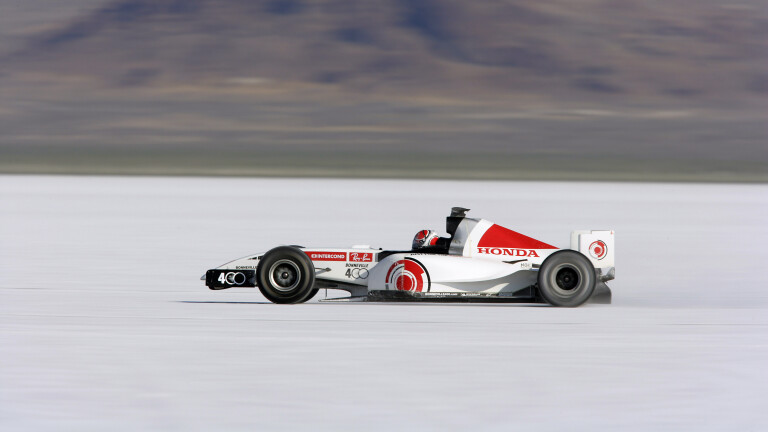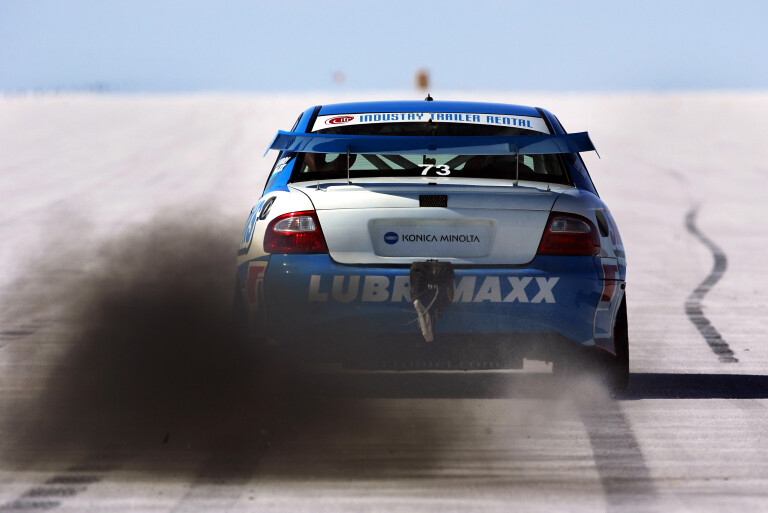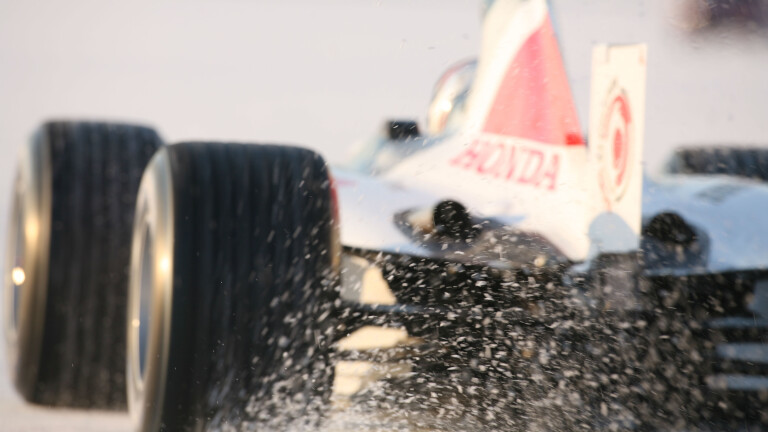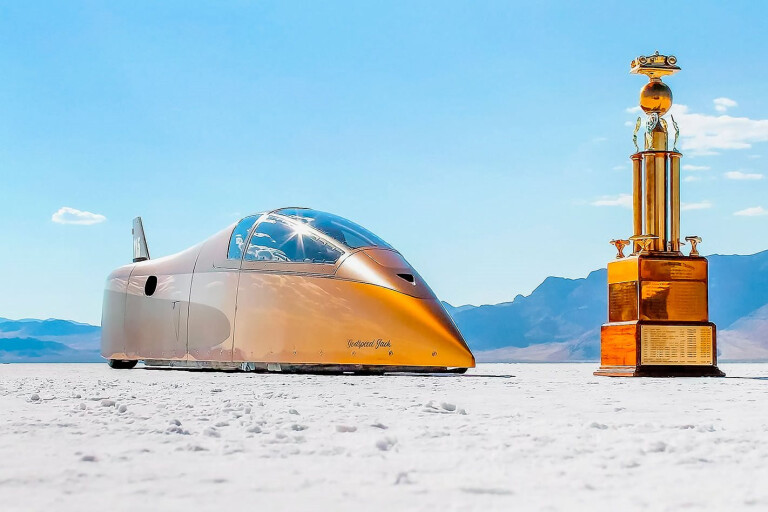
Neither the fastest V8 Supercar or F1 driver in history have ever started a race in their respective categories. It’s a bewildering fact that sounds like a straight-up lie.
Ever heard of the name Jamie Sargeant? No? Well, no one is faster in a V8 Supercar. In 2005 privateer V8 Supercar team owner Robert Smith was so annoyed with the people in charge of the category that he fobbed off the first round of the championship to go racing at Lake Gairdner. With Sargeant in the hot seat, and a parachute strapped to the back, the standard V8 Supercar clocked 313km/h: a high-water mark for home-grown touring cars that remains unbeaten, making a rally driver Australia’s fastest V8 Supercar driver – technically, at least.

While Sargeant is a largely unknown name outside specialist circles, there are a decent portion of F1 fans who would recognise Alan van der Merwe as the driver of the medical car at each grand prix. However, the South African is also the undisputed top speed king of the Formula 1 paddock. This is the story of how one team used an illegal car to break a record no one else had attempted, making a man with zero grand prix starts the fastest in F1 history.
It all starts with the controversial British America Racing (BAR) F1 squad. BAR joined F1 in 1999, and by 2004 it was the second-best constructor on the grid behind the unstoppable force that was Ferrari that year. But its 2005 season was a fall from grace that smashed several branches on the way back to earth. The car for ’05 was BAR 007, a simple evolution of the 006 that was competitive the year prior – don’t fix what’s not broken, right?

Thing is, BAR’s car wasn’t just a ‘simple evolution’ as first thought. For the new design the engineers installed a second, secret, fuel tank capable of holding an extra 11kg of fuel. This was discovered following the San Marino race, and despite the team’s protests that the additional tank was necessary because the V10 wouldn’t run without the extra fuel, both cars were disqualified and the team banned from two races.
BAR would quit the sport at the end of the year, with engine supplier Honda taking over the team, renaming the 007 chassis’ to a RA106 designation. In a show of goodwill with Formula 1, Honda used the car for Project 400 – a campaign to be the first FIA-sanctioned F1 car to crack 400km/h.

Initially, Honda thought it would need to completely rebuild the chassis and almost double the 662kW output of the atmo 3.0-litre V10 engine to reach 400km/h. But with the rear wing removed, much of the aerodynamics stripped back, front-wing trimmed out, and test driver van der Merwe in the hot seat, things started to get faster. You might think driving an F1 car in a straight line would be simple enough, but not so. “At first we couldn’t get the thing out of first gear. The ECU couldn’t handle that much wheel-spin,” van der Merwe recalled in an interview with F1.com.
With eight kilometres of run-up, van der Merwe set a two-way average of 397km/h at Bonneville, while Project 400’s fastest speed came during testing on the Mojave Desert at 413km/h. While impressive in its own right, the F1 and V8 Supercar’s salt lake speeds pale in comparison to a specialist.

To give you a frame of reference, the world’s fastest piston-powered car (well, streamliner) is known as Speed Demon, and it uses a 9.0-litre V8 with a pair of turbos the size of your head to achieve a two-way average speed of 756km/h. Streamliners are the F1 cars of the salt lake racer world, and have their own microcosm of fascinating engineering. Pushing a car to nearly 500mph without the aid of jet engines or rockets is a witchcraft of its own. Before every pass Speed Demon’s hybrid air/water intercooler is packed with 75 litres of water and ice, of which 36kg is melted after just 8km of running. That’s because the engine produces a peak power figure in the region of 2353kW, with a max torque output of 2734Nm. Such is the power and potential of the engine that its builder had to artificially soften the low-end torque lest the car never get traction on the salt.
That said, if Speed Demon were to retrace the F1 and V8 Supercar’s steps, and attempt to set a hot time at a circuit, my best estimate on a completed lap would be ‘eventually’.


COMMENTS